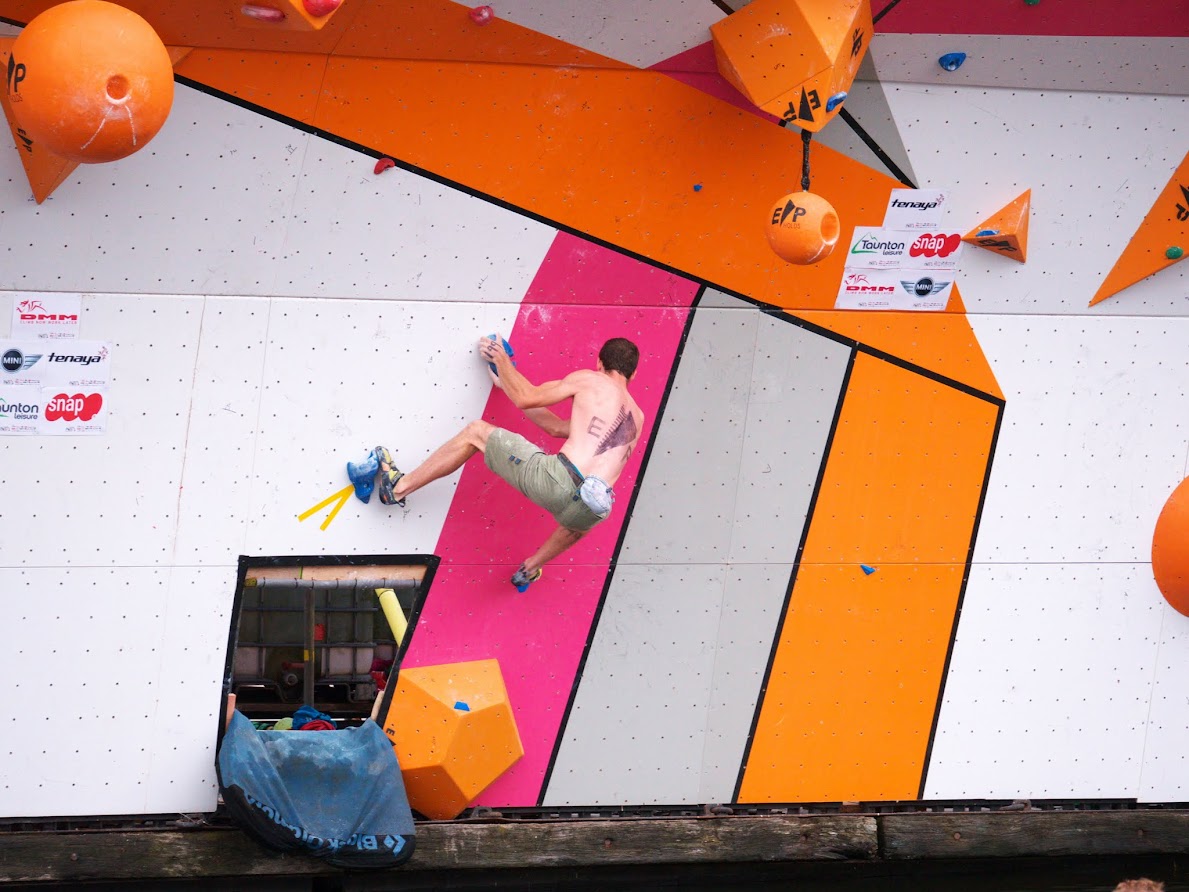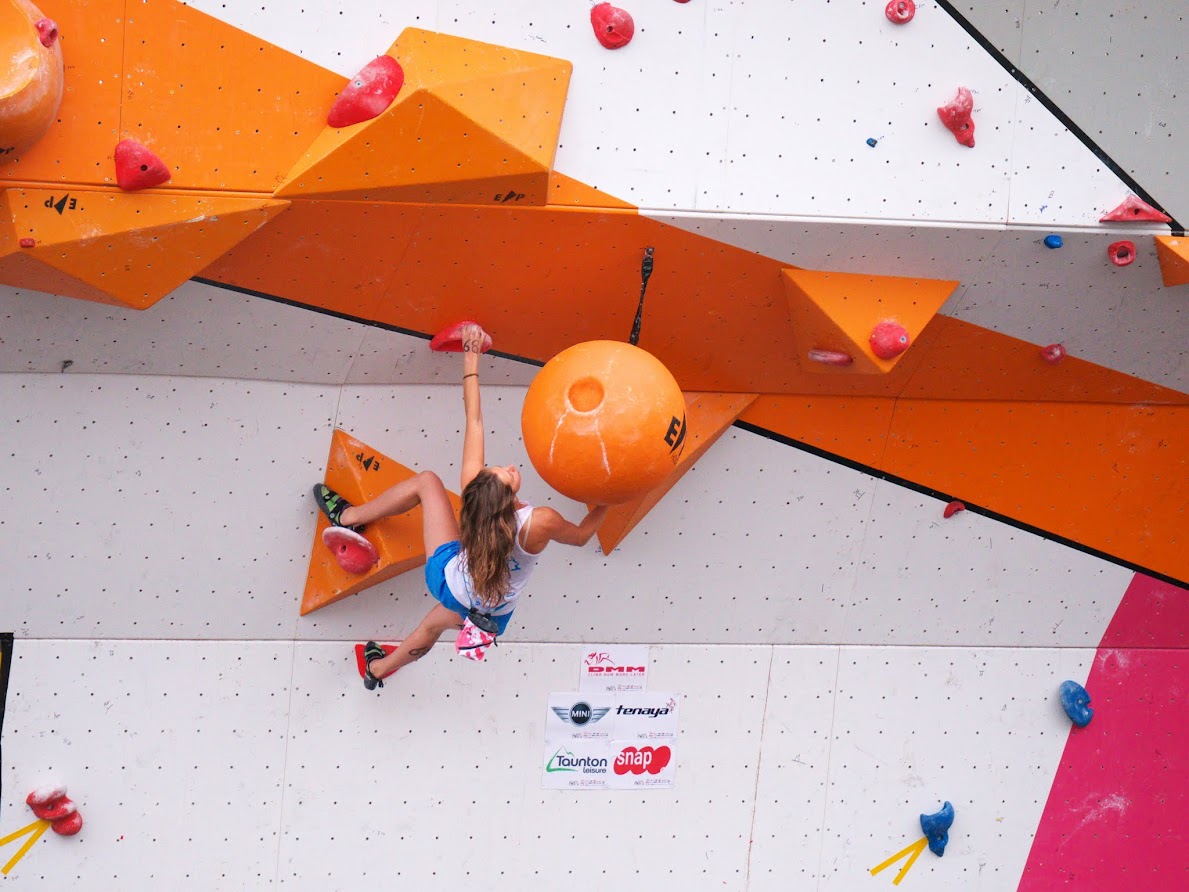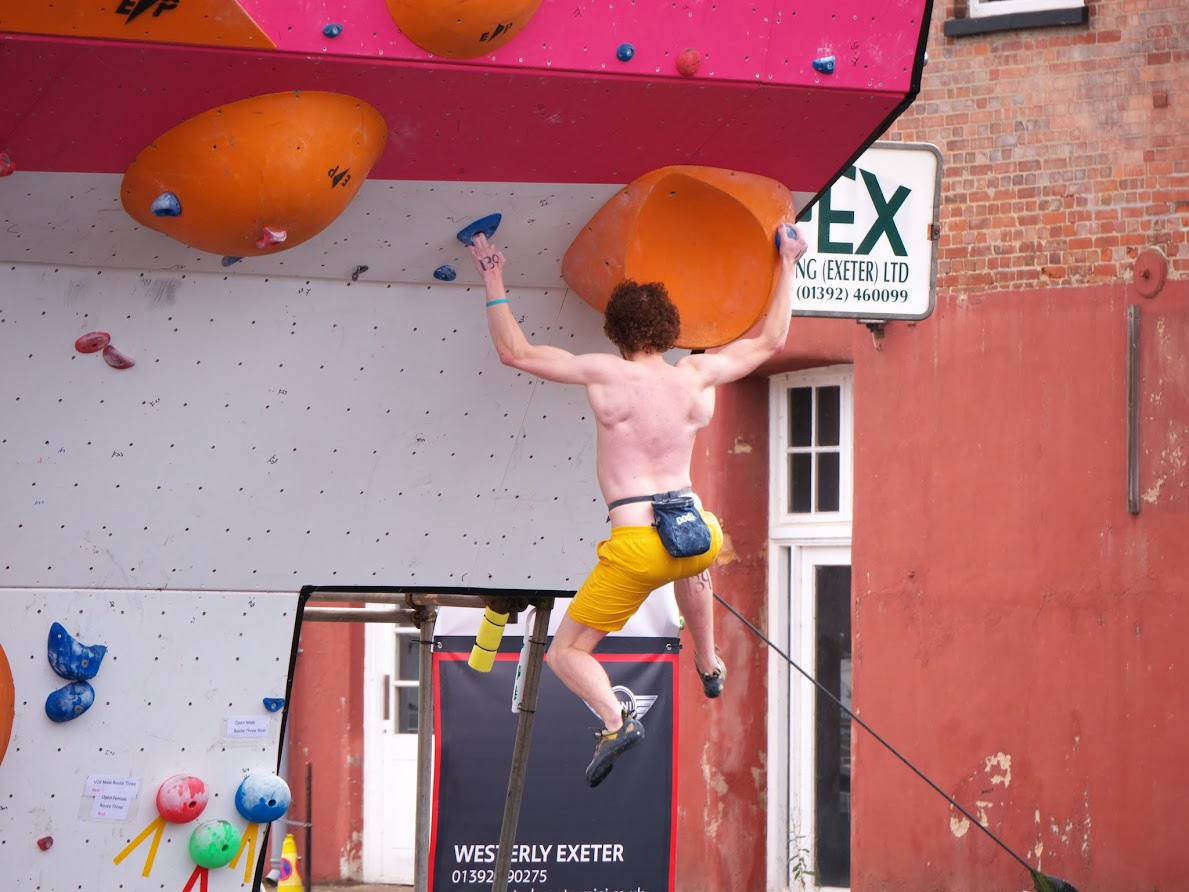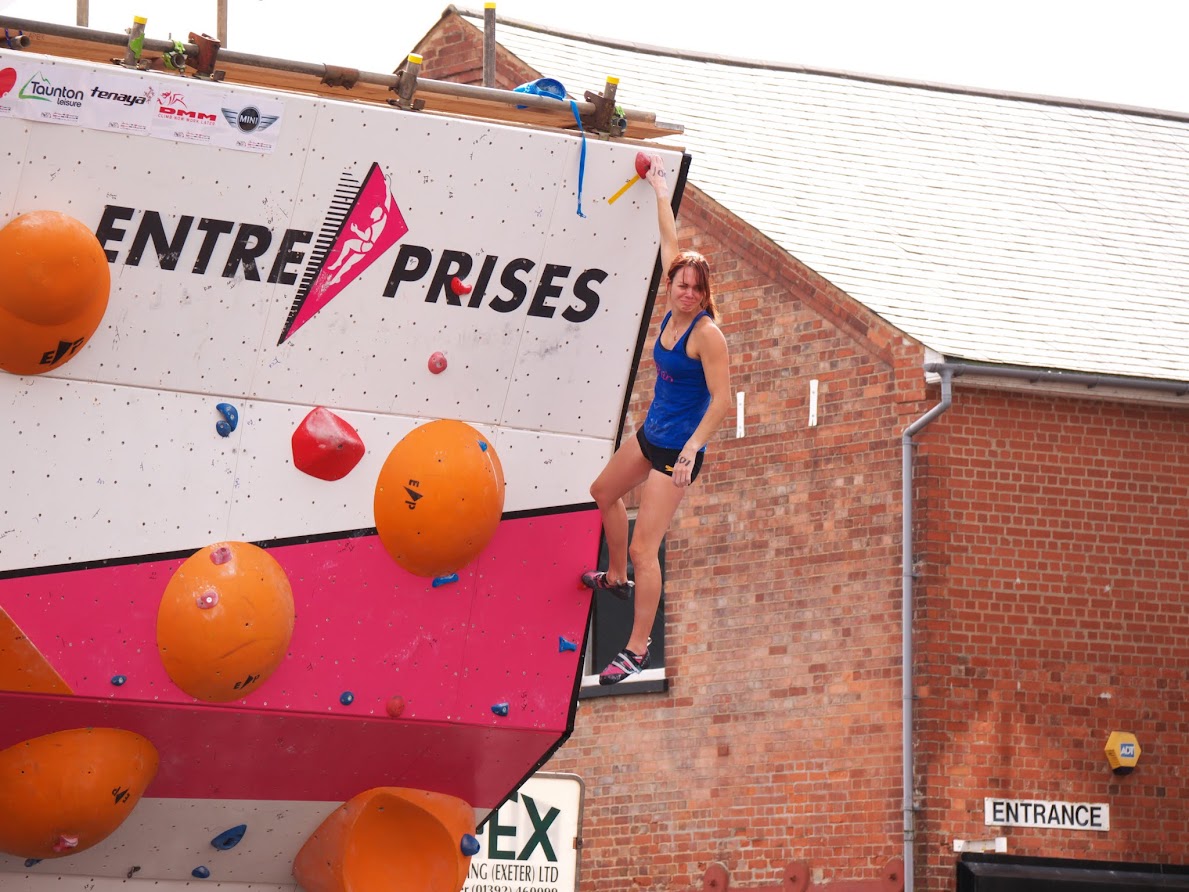Deep Water Solo 2016: Finals
Aug. 28th, 2016 09:50 pmAs per last year's competition, this year's final was a speed showdown between the six top finishers. Coming out from isolation, the climbers had a few minutes of inspection before heading backstage ahead of the event.
First out where the U16s who powered through their first attempts on the route, followed by the open female and male groups. After the first round, the three slowest competitors were eliminated, with the top three moving through into the final round. There was a strong local showing in the finals and the roars from the crowd when Rhos Frughniet and Alex Waterhouse were climbing could of knocked your socks off.
After a short rest while the other groups were climbing, the final finalists came out and repeated their routes, this time even faster, to decide their place on the podium. As the numbers were being written up on the scoreboard — the MC had been ticked off by the head judge for reading out the results, presumably because the competitors were not supposed to know what they were aiming for — you could have cut the air with a knife. And the reactions when it was announced that Alex had come second to Matt Varela-Christie in the men's comp and Rhos had won the women's were overwhelming.
As someone said afterwards: it's really exciting when you know the people involved.
First out where the U16s who powered through their first attempts on the route, followed by the open female and male groups. After the first round, the three slowest competitors were eliminated, with the top three moving through into the final round. There was a strong local showing in the finals and the roars from the crowd when Rhos Frughniet and Alex Waterhouse were climbing could of knocked your socks off.
After a short rest while the other groups were climbing, the final finalists came out and repeated their routes, this time even faster, to decide their place on the podium. As the numbers were being written up on the scoreboard — the MC had been ticked off by the head judge for reading out the results, presumably because the competitors were not supposed to know what they were aiming for — you could have cut the air with a knife. And the reactions when it was announced that Alex had come second to Matt Varela-Christie in the men's comp and Rhos had won the women's were overwhelming.
As someone said afterwards: it's really exciting when you know the people involved.
















































